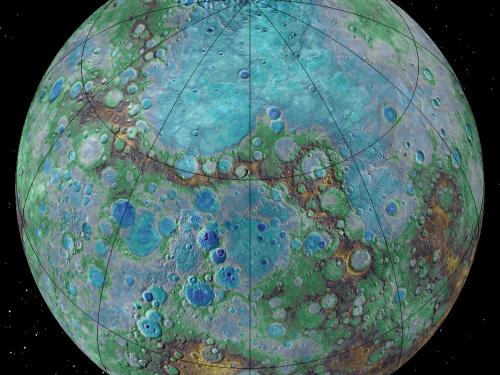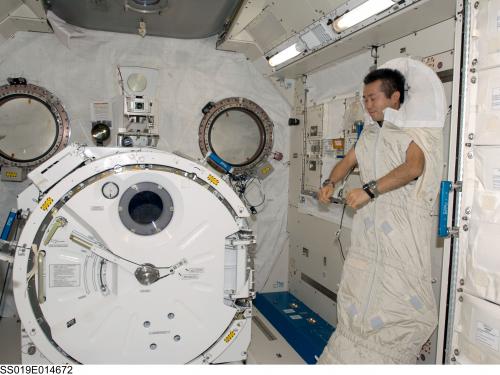

Stories of daring, stories of technological feats, stories of prevailing against the odds ... these are the stories we tell at the National Air and Space Museum. Dive in to the stories below to discover, learn, and be inspired.
Showing 71 - 80 of 111

September 28, 2016
Being a member of a science team of a planetary mission is like being a starter on a major league baseball team—you’re in the game. That’s how I felt as a member of the MESSENGER mission to Mercury. During the final months of MESSENGER’s time in orbit, before the fuel on the spacecraft was expended and crashed on Mercury’s surface, a decision had to be made—keep the spacecraft in its nominal mapping orbit as long as possible or let the spacecraft altitude drift lower to get as close to the planet as possible.

August 31, 2016
It’s the little things we take for granted here on Earth; things like being able to lie down on a bed and not have it float away, or wake up without suffocating on our own exhaled carbon dioxide. While interning at the Museum, I’ve spent time researching several of those things we take for granted but astronauts in space cannot.

August 12, 2016
The annual Perseid meteor shower is at its peak (August 11-13). Meteor showers occur when the Earth’s orbit around the Sun takes us through a debris field, which is often a trail of cosmic dust left behind by a comet.

June 15, 2016
During the Mercury, Gemini, and Apollo missions, one of NASA’s concerns was the safety of its crews, something it monitored rigorously through the use of biomedical instrumentation. As initial flight planning commenced in 1959, biomedical equipment capable of transmitting from space did not exist. NASA quickly brought together medical staff and hardware engineers to develop biomedical technology.

May 04, 2016
In our exhibition Time and Navigation visitors can set their watches by a working cesium frequency standard, commonly known as an "atomic clock." Before the clock was installed, we needed the frequency standard to be calibrated to the national reference time at the U.S. Naval Observatory in Washington, DC.

April 07, 2016
On February 11 of this year, when scientists announced that they had detected gravitational waves, I was among the thousands of people who were so excited we couldn’t sit still. This news was literally Earth-shaking! Gravitational waves are ripples in space-time, and they’re created by events like the collision of massive objects, such as black holes. So of course, being an astronomy educator, I took the first opportunity to talk about this news with visitors at the Museum. The day after the announcement, I set up our black holes Discovery Station, which uses a rubber sheet to demonstrate how space-time gets warped by massive objects. I created my own “gravitational waves” by tapping on the rubber sheet to make it vibrate, like ripples on a pond.

March 07, 2016
This past summer I had the opportunity to operate the world’s largest single-dish telescope at the Arecibo Observatory in Puerto Rico.

February 26, 2016
Scientific images can rival those of the most talented artists, a fact that is now on display in A New Moon Rises at our Museum in Washington, DC. Take, for example, an image of Reiner Gamma, a beautiful and strange feature on the Moon that looks as though a tadpole has been painted across the flat surface of Oceanus Procellarum. The image demonstrates the phenomenon of lunar swirls – bright patterns that some scientists believe may result from the solar wind striking the lunar soil. A localized magnetic field anomaly may have given this swirl its peculiar shape. The photo is densely packed with scientific information.

December 20, 2015
One of the most common questions we get at the Phoebe Waterman Haas Public Observatory is about what kind of telescope to buy, whether for a gift or for personal use. We’re here to help answer that question.

September 30, 2015
The recent announcement by NASA that there is evidence of salty, liquid water seeping out of the ground on Mars is both exciting and scientifically puzzling at the same time. As a member of the science team for the High Resolution Imaging Science Experiment (HiRISE) camera on board the Mars Reconnaissance Orbiter (MRO), I’ve been hearing about these possible seeps, or Recurring Slope Lineae (RSL), for several years now.